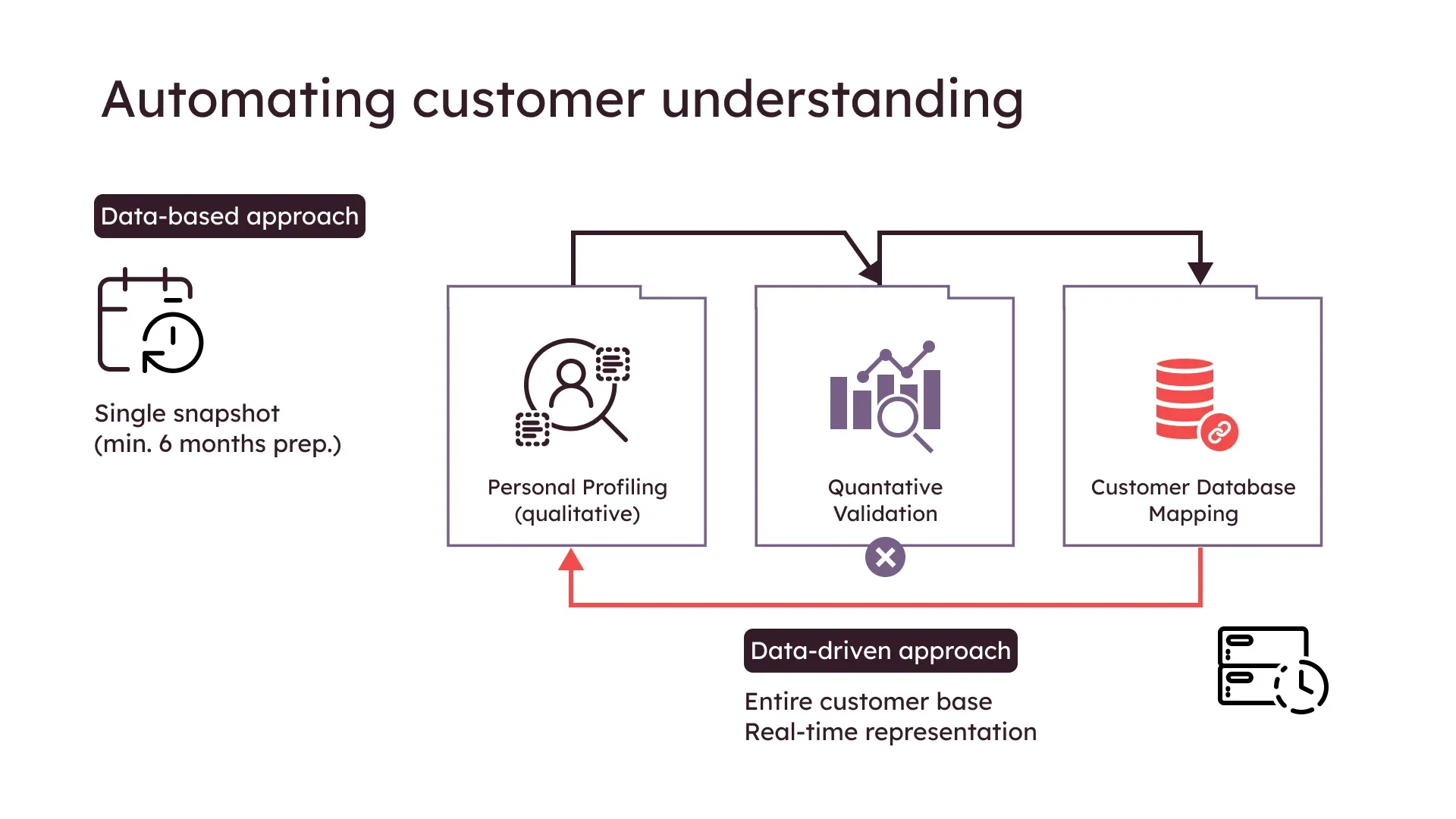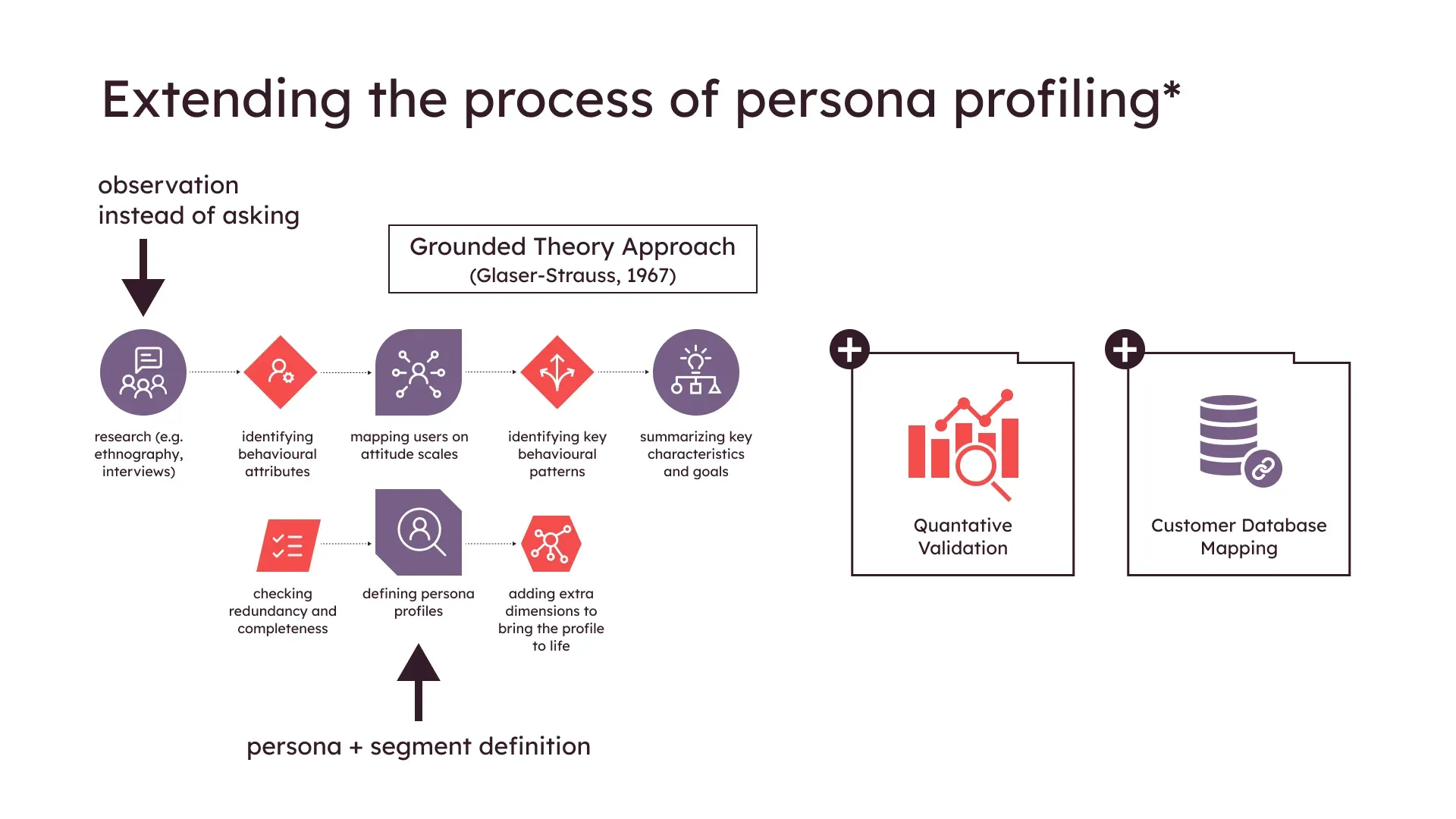Enhancing cross-sell / upsell and promotional activities, and supporting customer migration to higher-value plans at Magyar Telekom
To make our client’s cross-sell and upsell efforts more relevant and personalize offers, we sought to understand a critical challenge: why prepaid customers—who often spend more than postpaid subscribers—are reluctant to switch to postpaid plans. Our goal was to uncover insights that would help us better convince these customers to migrate to more valuable subscription options.
To address this, we conducted extensive ethnographic research (online diaries with 15 prepaid customers for 1 month) together with a research agency to identify behavioral patterns that could complement the usage data recorded in the CRM database. These contextual behavioral insights provided a richer understanding of customer motivations, pain points and opportunities in the telecommunications space.

Having identified the persona attributes, we created a persona questionnaire and distributed it to a 40,000-customer base. The qualitative responses (from nearly 6,500 respondents) were then integrated with the CRM usage data via unique user IDs, enabling us to validate whether the articulated customer feedback aligned with their actual usage history. This approach ensured that the personas we developed accurately represented customer behavior with confidence.
With these validated personas, we could identify corresponding segments within the CRM database. By analyzing their usage patterns (e.g. frequency, value, engagement with offers and services used), we helped refine our client’s sales strategies and tailored communication messages to resonate more effectively with each persona. This enabled us to enhance the prepaid-to-postpaid migration initiatives, ensuring greater alignment with customer needs and preferences.
As an experiment, we also compared a motivation-driven segmentation approach with the persona-based method on the same data set to determine which better supported our business goals. The results revealed that the persona-based approach was more effective for this specific objective. The key takeaway was that motivation or need states alone did not directly predict how customers would behave when using the services. The same motivation could result in diverse behaviors, making it less reliable for precise targeting and service recommendation. In contrast, personas exhibited clear and consistent characteristics in key differentiating behavioral attributes, which made them easier to identify and segment within the CRM database.
Using personas to support the design of chat service strategy and features at
OTP Bank
The goal of this project was to understand user personas in the context of automated customer care services, enabling our cross-functional team to help design an AI-supported digital assistant (chatbot). We aimed to identify the content and functions the chatbot should provide, determine how it could communicate effectively with customers, and assess whether creating a human-like chatbot persona would be beneficial.

To achieve this, we analyzed how customers interact with the Bank’s chat service and tested automated chat flow prototypes with users. This process helped us define behavioral attributes and create hypothetical persona profiles relevant to automated customer service. Using these attributes, we developed a persona questionnaire and conducted a quantitative research among OTP customers with the help of their research team.
We collected a substantial number of responses to enable statistical weighting, ensuring the results accurately represented the entire customer base. From this analysis, we identified two dominant persona types to guide key decisions, such as how transactions should be facilitated through chat for each persona type, which functions to prioritize for chat design and development, and how the AI chatbot should operate overall.
Similar to the telecommunications case, existing digital banking segmentation did not yield sufficiently actionable contextual insights for designing new features for chat users. In contrast, personas proved more effective in aligning design decisions with customer behavior and needs, as they could offer additional domain-specific insights.
Conclusion
Based on both projects we observed, integrating persona profiling with CRM data provides businesses with deeper customer insights than traditional segmentation methods alone. Additionally, we found that motivations—such as being control-driven or a comfort-seeker—do not consistently predict behavior or decision-making. These case studies demonstrate how this combined approach enhances targeting strategies and service design, highlighting that customer motivations do not always align with their actual behaviors.
"The data-driven persona method provided a more grounded understanding of our prepaid users. By linking behavioral patterns with actual CRM data, it helped us refine our upsell strategy, enabling more targeted and relevant offers based on real customer insights."
"A persona-driven approach helped us shape a digital chat assistant that aligns precisely with customer behaviors and expectations. The result is a solution with relevant functionality, intuitive communication and a tailored user experience that resonates with both the language of our customers and the voice of our brand."
* Dr. Tímea Mónika Tóth, "Actionable Customer Understanding"
PhD Dissertation (2023)